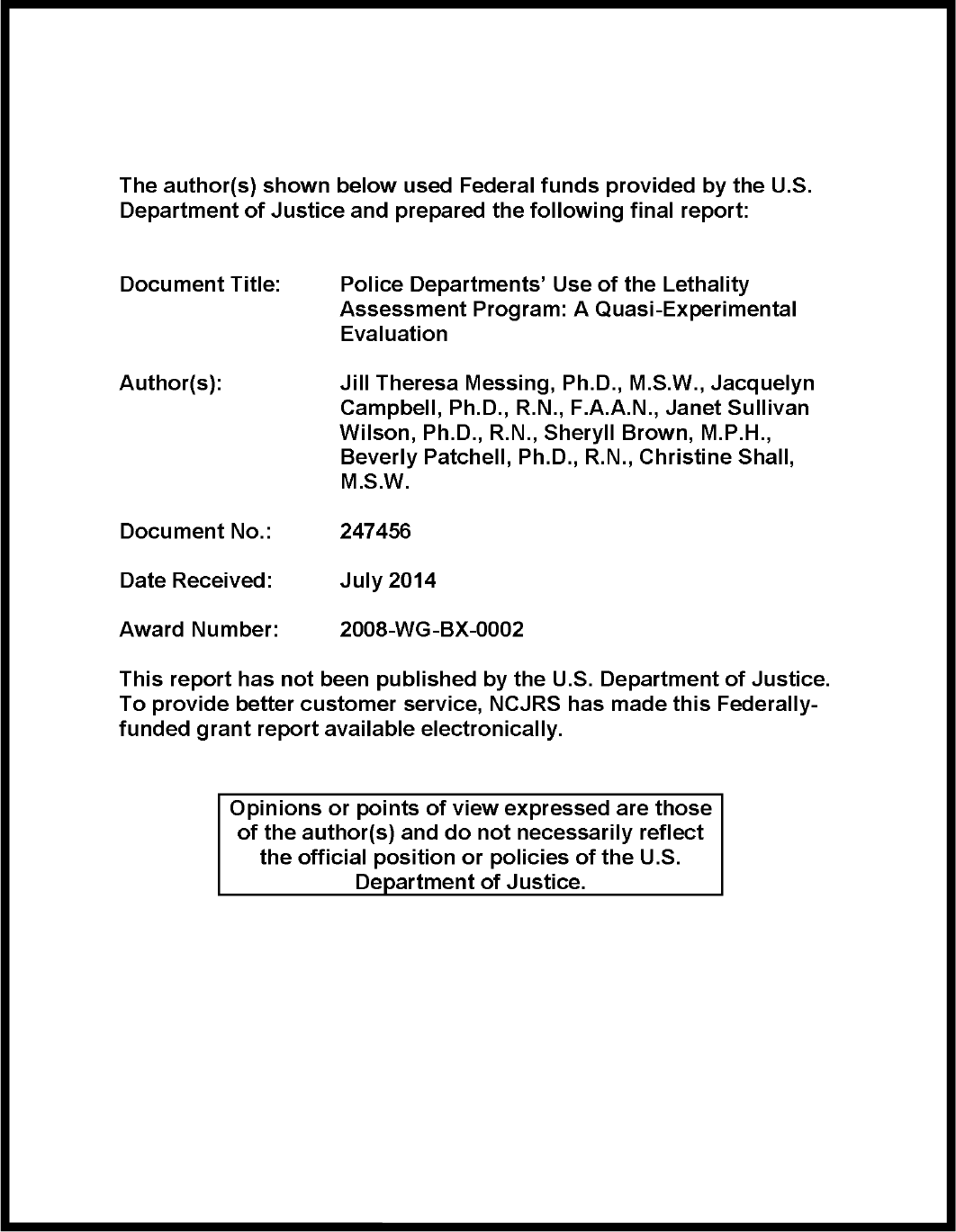
Calling the police is one of the most commonly employed help seeking strategies by women in abusive relationships, though domestic violence services, safety planning and shelter are more often rated as helpful by survivors of intimate partner violence (IPV) and have been shown to be more effective at reducing subsequent violence. The purpose of this quasi-experimental research was to examine the effectiveness of the Lethality Assessment Program (LAP). The LAP is a collaboration between police and social service providers consisting of 2 steps. First, a police officer responding to the scene of a domestic violence incident uses a brief 11-item risk assessment (the Lethality Screen) to identify victims at high risk of homicide. Second, women that screen in as high risk based on the Lethality Screen are put in immediate telephone contact with a collaborating social service provider who provides them with advocacy, safety planning and referral for services. Specifically, it was hypothesized that the LAP would (1) decrease rates of repeat, severe, lethal and near lethal violence and (2) increase rates of emergency safety planning and help seeking. We also examined the predictive validity of the Lethality Screen, officers’ implementation of the LAP with the appropriate victims of IPV and victim satisfaction with the police response.
